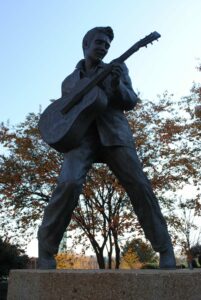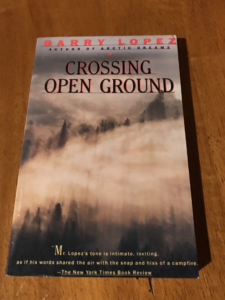Between 1954 and 1958, Rock and Roll ignited the American psyche. Born of a combination of rockabilly, blues, jazz, country, and doowop, Rock and Roll responded to a need deeply rooted in a cultural unconscious that had been sold ideas of traditional values and normative behavior.
Identity: Being Special Like Everyone
Popular culture grew out of the rise of mass media throughout the nineteenth century and influenced the postwar era more than any prior era in history. Televisions were sold commercially for the first time in 1948. The majority of the population had radios, which had enjoyed a golden age throughout the 20’s, 30’s, and 40’s. With the proliferation of automobiles, billboards expanded beyond railroad tracks, and magazines and newspapers entered a new era of affordability and color printing.
Large portions of the population saw the same images, heard the same messages, and purchased the same products. The explosion of popular culture meant companies could represent values and traditions to a diverse population that spanned a nation about the size of Europe.
People began to expect certain behavior from one another. Ideas of propriety expanded beyond social sets within socioeconomic classes. Everyone had been shown an image of how the “right sort” lived, and if most didn’t exactly act accordingly, they certainly internalized expectations.
Social expectation and a mass sense of propriety can be seen in the popular radio show Father Knows Best, which aired as a hit sitcom from 1954-1960. Dick Van Dyke and Mary Tyler Moore slept in twin beds from 1961-1966, and Leave It to Beaver (1957-1963), believe it or not, was transgressive in its day for dealing with issues of alcoholism, divorce, child abuse, and troubled teens.
Rock and Roll provided the opportunity to feel rhythm, vitality, and release in public. Most people, adults as well as children struggling to understand their parents’ repression, responded to the visceral nature of this simple music that combined a syncopated, motific rhythm with universal, often repetitive lyrics.
Pop: Short, Sweet, Universal, and Indulgent
We’re certainly more indulgent today than we were in the twentieth century, but we lack a popular art form that releases the tension of our cultural unconscious. We have no escape from the drives to conform derived from our collective experiences, most of which are commercially constituted.
Today, we expect others to enjoy gratuitous sex, consume mind-altering substances, make public every aspect of their lives, make a living exposing their bodies, and generally behave in self-serving manners. Parents often define fulfillment for their children as the opportunities to do and possess what they desire.
Why would anyone go to college if not to obtain more choices? Isn’t that why college costs so much? The difference between more and enough is always a choice. On what basis do we make that choice? Where would we get the tools to choose wisely?
Rock and Roll grew out of cultural repression and became a form of counterculture in the 1960’s, after mainstream culture pushed back against its perceived libertinism. The 60’s antihero counterculture depended upon mainstream inhibition and propriety. Contemporary cultural current lacks a restrictive mainstream. Express the self in order to express and impress, but nothing develops. Nothing moves—not the body, not the mind, and not the emotions.
We’re neither hero nor antihero in our culture’s story; we’re special like everyone else.





